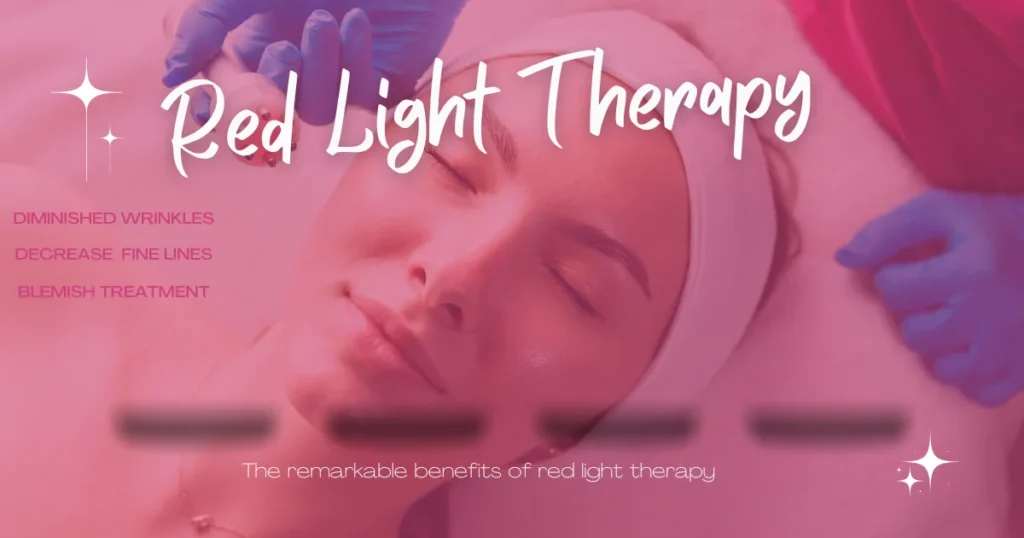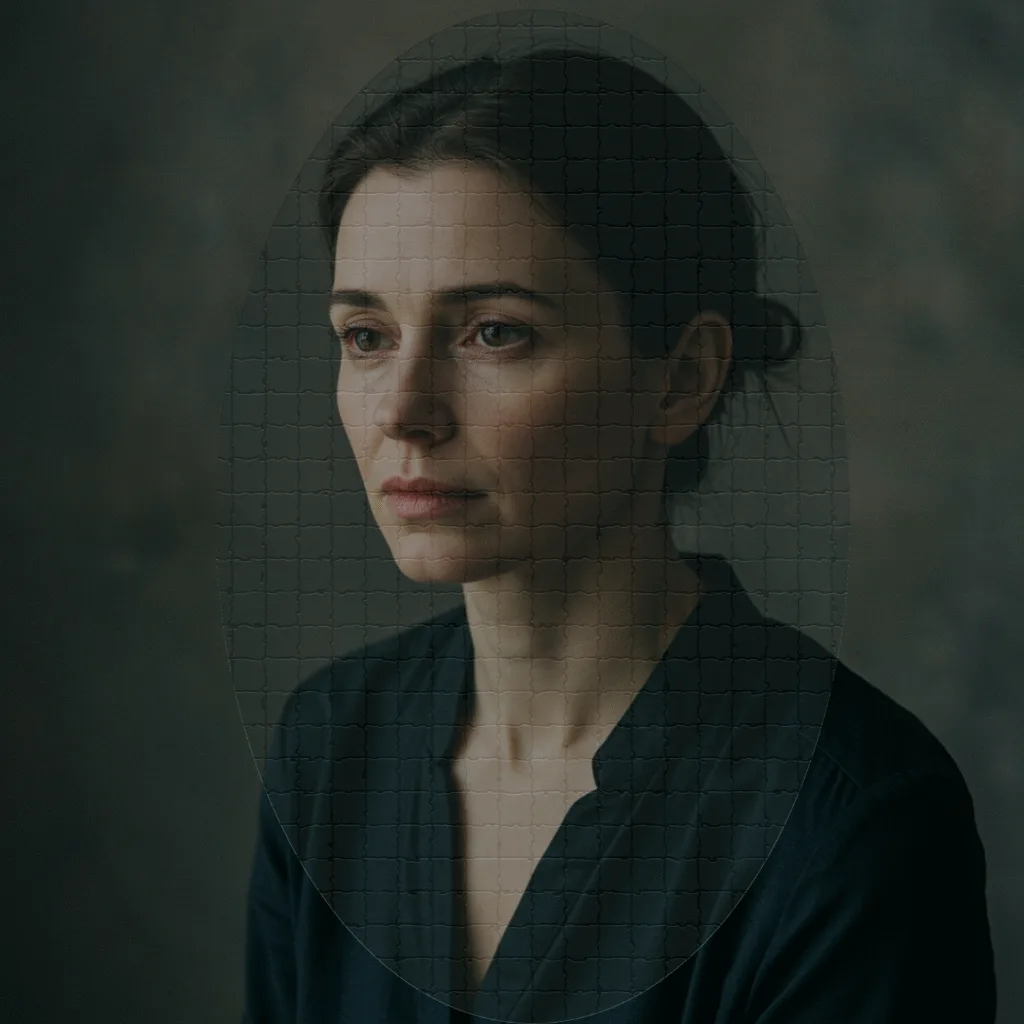
The remarkable benefits of red light therapy and some tips you must know before using it for your face.
A Brief Introduction to Red Light Therapy
It is true that everyone wants to be attractive. To achieve this universal wish , the skincare sector is always introducing new methods and tools. Among several tools, red light therapy is the most popular tool in the current era, providing a painless, non-invasive, and efficient way to revive and renew facial skin.
We’ll examine the science of Red light therapy, also known as low-level laser therapy (LLLT) or photobiomodulation (PBM), and all of its advantages and some tips for your face in this in-depth guide.
Understanding Red Light Therapy
Red light therapy, often referred to as photobiomodulation (PBM) or low-level laser treatment (LLLT), uses particular red and near-infrared light wavelengths to increase cellular activity. These wavelengths pass through the epidermis and into the deeper layers of the skin, where they stimulate different physiological reactions.
The Mechanism of Red Light Therapy
Red and near-infrared light interacts with mitochondria, the cell’s powerhouses that produce adenosine triphosphate (ATP), the form of energy, at the cellular level. A series of biological processes are set in motion by this contact.
Higher ATP production
More cellular energy facilitates quicker tissue repair and cell turnover, which results in skin that is healthier and more luminous.
Increased synthesis of collagen and elastin
Red light therapy activates fibroblasts, which are cells that make the vital proteins that keep skin elastic and firm. Red light treatment has anti-inflammatory qualities that can help soothe sensitive skin and lessen redness.
Improved blood circulation
Red light therapy promotes a healthy complexion and accelerates the healing process by improving microcirculation, which carries oxygen and nutrients to skin cells. So say goodbye to fine lines and rejuvenate your skin – as red light stimulates blood flow to help reduce the signs of aging for younger-looking skin.
Antioxidant defenses are activated
Red light therapy activates the body’s built-in defenses against oxidative stress and environmental damage to skin cells.
Red light therapy's benefits for your face
Diminished Wrinkles and Fine Lines: Red light treatment causes a visible decrease in the appearance of wrinkles and fine lines by promoting the creation of collagen. Skin looks younger, firmer, and smoother with repeated treatments.
improved Tex and Skin Tone, giving you the confidence to show off your natural skin radiance.Red light therapy enhances skin tone and texture, reduces the appearance of pores and hyperpigmentation, and improves more even complexion by increasing circulation and stimulating cell turnover.
Accelerated wound healing is one of the best features of red light therapy:
Whether you’re dealing with acne scars, sun damage, or other blemishes, red light therapy accelerates the skin’s natural healing processes, helping to fade scars and imperfections over time.
Acne and Blemish Treatment: Red Light Therapy has antibacterial properties that help break up acne, reduce inflammation, kill bacteria, and promote clear, healthy skin and clear acne without the need for harsh chemicals or medications.
Reduction of Rosacea Symptoms: For those with rosacea, red light therapy offers relief from redness, flushing, and inflammation, helping to calm sensitive skin and restore a more balanced complexion. It also helps to reduce the appearance of rosacea, psoriasis, and eczema.
Prevention of Signs of Aging:We do everything we can to prevent the signs of aging so that we look young for a long time. To achieve this goal, radiation therapy prescriptions are very effective.
Incorporating red light therapy into your skincare routine can help prevent premature aging by stimulating collagen production and protecting against environmental damage. It reduces fine lines, wrinkles, and age spots, promoting a more youthful appearance.
Facial skin care and treatment: Aging and sun exposure can cause unwanted effects on our skin – from wrinkles and discoloration to redness and uneven texture.
The therapy allows you to treat the visible signs of aging and damaged skin with professional-grade technology. It will stimulate collagen production for firmer, more youthful-looking skin. Red therapy improves skin texture and tone for an effortless glow. It is a non-invasive option.
Non-Invasive and Pain-Free: Unlike invasive cosmetic procedures or harsh chemical peels, red light therapy is gentle, non-invasive, and pain-free, making it suitable for all skin types, including sensitive skin.
Reducing inflammation: Soothes and calms the skin, reducing redness and irritation.
Enhancing facial circulation : Improves blood flow, helping to reduce the appearance of dark circles and puffiness.
Relaxation and stress relief : Reduces stress and promotes relaxation, helping to reduce the appearance of tension lines and wrinkles.
Convenient and Cost-Effective: With the availability of at-home red light therapy devices, achieving professional-quality results has never been easier or more affordable. Incorporating red light therapy into your skincare regimen requires minimal time and effort, offering long-term benefits without breaking the bank.
In Conclusion red light therapy represents a revolutionary approach to skincare, harnessing the power of light to rejuvenate and revitalize facial skin. From reducing wrinkles and acne to improving skin tone and texture, the benefits of red light therapy are vast and scientifically proven.
Whether you choose to undergo professional treatments or invest in an at-home device, incorporating red light therapy into your skincare routine can help you achieve a radiant, youthful complexion that glows from within.
It’s very important to consult with a professional to determine the best course of treatment for your individual skin concerns.
It’s essential to recognize that like any treatment, it also comes with its share of drawbacks. In this context , we’ll take a closer look at some of the potential disadvantages of red light therapy for the face, providing a balanced perspective on this popular skincare technique.
Limited Scientific Evidence: While some studies support the efficacy of red light therapy for certain skincare concerns, such as reducing wrinkles and improving skin texture, the overall body of scientific evidence remains somewhat limited.
More research is needed to fully understand the long-term effects and potential risks associated with red light therapy for facial skin.
Potential Side Effects: While red light therapy is generally considered safe when administered correctly, some individuals may experience mild side effects, such as temporary redness, swelling, or irritation. These side effects are usually mild and transient but may be concerning for those with sensitive or reactive skin.
Inconsistent Results: The effectiveness of red light therapy can vary depending on various factors, including the specific device used, treatment protocol, and individual skin type.
Some individuals may experience significant improvements in their skin, while others may see minimal or no results, leading to frustration and disappointment. Due to Variable results, Individual results may vary, and some people may not see significant improvements as they expected.
Temporary solution: Red light therapy is not a permanent solution and requires ongoing maintenance.
Time and Commitment: Achieving noticeable results with red light therapy typically requires a consistent and long-term commitment. Daily or weekly treatments may be necessary to maintain results, which can be time-consuming and may not fit into everyone’s busy lifestyle.
Cost: Red light therapy sessions can be expensive, especially if done regularly. While there are affordable at-home red light therapy devices available on the market, professional-grade treatments can be costly, especially if multiple sessions are required. For those on a tight budget, the expense of red light therapy may outweigh its potential benefits.
Limited availability : Not all spas, salons, or clinics offer red light therapy.
May not address underlying issues : Red light therapy may not address underlying skin concerns, such as hormonal imbalances or genetic predispositions.
Potential eye damage : Direct exposure to red light can potentially damage the eyes; proper eye protection is essential.
May interact with certain medications:Some medications and topical skincare products may interact with red light therapy, potentially reducing its effectiveness or causing adverse reactions, such as blood thinners or photosensitizing medications.
Not suitable for everyone and for all skin types: While red light therapy is generally safe for most skin types, it may not be suitable for individuals with certain skin conditions or sensitivities. Those with photosensitive skin, active skin infections, or a history of skin cancer, those who are pregnant or breastfeeding should consult with a dermatologist before undergoing red light therapy.
Lack of standardization: Red light therapy protocols and devices may vary, making it challenging to determine the most effective treatment.
Risk of Overexposure: While red light therapy is considered safe when used as directed, overexposure to high-intensity light can potentially cause damage to the skin, including burns, hyperpigmentation, or exacerbation of existing skin conditions. It’s essential to follow the manufacturer’s guidelines and avoid excessive exposure to red light therapy.
Conclusion: From limited scientific evidence and potential side effects to the time commitment and cost involved, red light therapy may not be suitable for everyone. Before incorporating red light therapy into your skincare regimen.
it’s essential to weigh the potential risks and benefits and consult with a skincare professional or dermatologist to determine if it’s the right choice for you.

